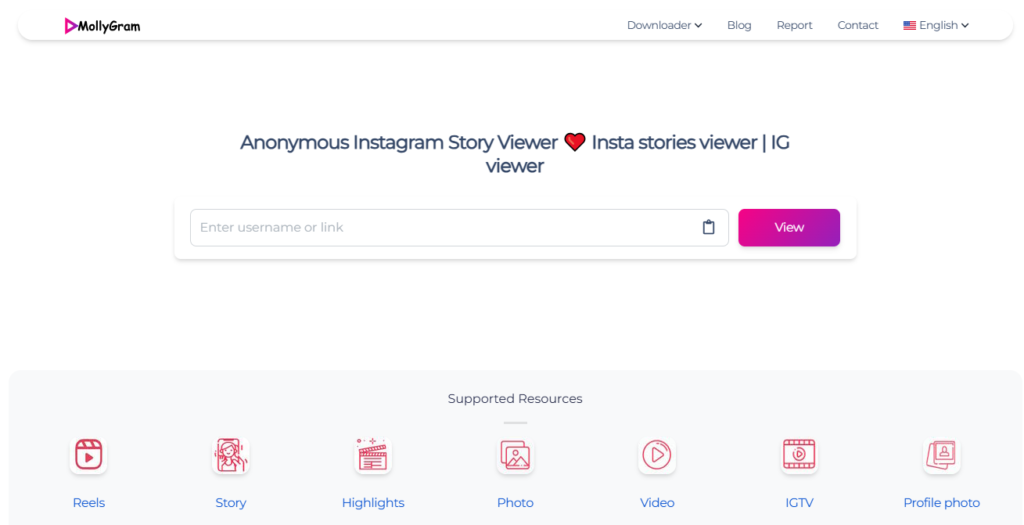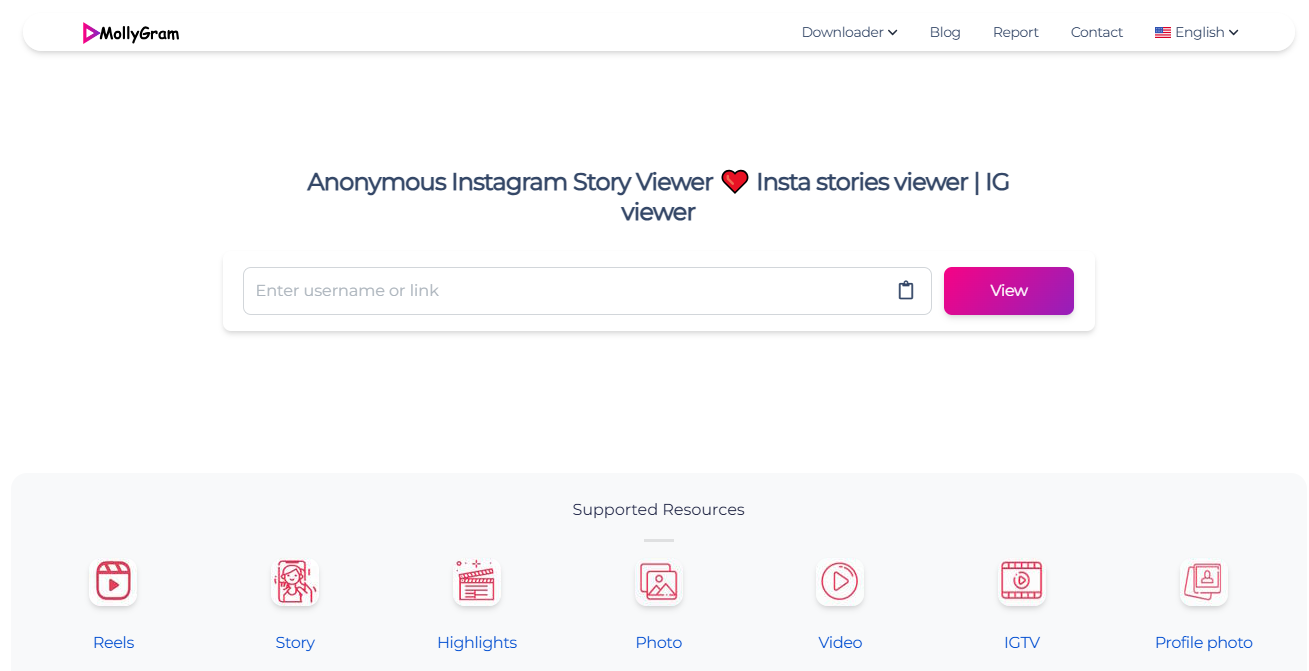• B2B UX must prioritize efficiency, clarity, and reliability instead of visual flair
• Enterprise users need streamlined workflows, predictable patterns, and minimal friction
• Multi role user groups require tailored experiences and adaptable interfaces
• Complex data should be organized with intuitive navigation, strong filtering, and clean structure
• Consistency across every module strengthens trust and reduces cognitive load
• Automation and smart defaults accelerate repetitive tasks and boost productivity
• Personalization increases usability for managers, analysts, admins, and occasional users
• Effective onboarding and contextual guidance lower the learning curve
• Data driven insights reveal hidden friction points and guide ongoing UX improvements
• A strong UX foundation leads to higher adoption, fewer support tickets, and better long term ROI
When it comes to building B2B web applications, getting the user experience (UX) right is essential—not just for usability but for long-term success.
B2B platforms, especially SaaS tools and hospitality applications, demand a different approach from B2C. Understanding the different types of web applications helps determine how UX should be structured.
You need solid UX principles for B2B, intuitive workflows, and clear interaction design.
This guide breaks down the most important UX principles for B2B platforms, from UX guidelines for B2B SaaS applications to interaction design rules for complex workflows.
We’ll also cover B2B UX mistakes to avoid, and the UX standards for B2B platforms that help you create powerful, user-focused software.
What is UX Design?
User Experience (UX) design refers to the process of enhancing user satisfaction by improving usability, accessibility, and the overall experience of interacting with digital products like websites and apps.
While many people think of UX design as just how something looks, it’s far more comprehensive.
UX design focuses on understanding users’ needs, behaviors, and challenges to design solutions that are efficient and effective.
It’s all about how users interact with a product—making that interaction seamless, intuitive, and enjoyable.
In web apps, especially B2B, this means creating interfaces that are easy to navigate, visually clean, and support the user’s business needs.
Whether it’s a CRM or an inventory system, UX guidelines for B2B SaaS platforms ensure tasks get done smoothly.
Great UX design requires deep user understanding, plus research, wireframing, prototyping, and constant testing.
When done right, it leads to higher user retention, improved efficiency, and greater product success.
What is B2B UX?
B2B UX (Business-to-Business User Experience) refers to UX principles specifically designed for digital platforms used by businesses.
Unlike B2C applications for individuals, B2B tools are used by professionals and teams to handle operations, manage data, and collaborate.
Here, the goal is to improve productivity and efficiency. Users are often decision-makers or employees using these platforms as part of their daily tasks, so the UX standards for B2B platforms must support their work with minimal friction.
What makes B2B UX unique is the focus on business processes, not just product delivery. Reliability, clarity, and functionality are prioritized over visual flair.
A well-executed B2B UX improves operational flow, user adoption, and reduces training costs—contributing to overall business success.
What Makes UX Different in B2B Web Applications
UX design in B2B web applications is different from B2C design because the users, needs, and goals are different.
B2C apps cater to general consumers with individual preferences, while B2B apps are built for teams managing critical operations.
B2B tasks are often complex—like managing data or coordinating teams—and require precise functionality. Learn how modern web application architecture principles support these workflows.
Users are professionals who need to complete tasks quickly, so the interaction design rules for B2B apps must allow that without confusion.
Additionally, B2B platforms usually support multiple roles like admins, managers, and team members, each needing different levels of access. UX must support all users without clutter or confusion.
Aesthetics are secondary to performance in B2B apps. Clear navigation, robust functionality, and seamless workflows are essential. The goal is not to impress, but to help users work efficiently.
Why UX Misalignment Happens in B2B Applications
UX misalignment often begins long before a user ever interacts with the interface. In many B2B environments, multiple teams shape the product, which creates fragmented decision making and unclear priorities. Product teams may be focused on features, while stakeholders emphasize deadlines, and developers concentrate on technical feasibility. Without a unified product vision, the final experience drifts away from what users genuinely need.
Another common cause is limited exposure to real users. When decisions are based on assumptions instead of continuous research, workflows and screens evolve in ways that do not reflect how professionals actually perform tasks. This often leads to overly complex interfaces, unnecessary steps, or features that receive low adoption.
B2B systems also grow over time. As new capabilities are added, the original structure may not scale smoothly, causing inconsistencies in design, navigation, and terminology. When this happens, even experienced users can feel lost or overwhelmed.
By understanding these underlying causes, teams can create processes that prevent misalignment and keep the product aligned with the daily realities of business users.
Top 15 Important UX Rules for B2B Web Applications
Rule 1: Design for User Roles and Workflows
Great B2B web app UX rules begin with understanding user roles and workflows. Each user type has specific tasks and goals, so the interface must reflect that.
For instance, admins may need access to settings, while project managers focus on assigning tasks, and team members just want to submit updates. Tailoring the design to these roles ensures no one is overloaded with unnecessary features.
Designing around workflows also means simplifying tasks. Processes should have minimal steps and clear paths—like approving a report in a few easy clicks.
By designing for roles and workflows, B2B apps become intuitive, efficient, and supportive of daily business operations.
Rule 2: Prioritize Functionality Over Flashiness
In B2B UX, function beats flair. While design matters, what matters more is whether users can complete tasks easily and efficiently.
Business users value performance and reliability over animation or design trends. A flashy interface can even be a distraction, slowing down productivity—one of the B2B UX mistakes to avoid.
Prioritize clean layouts, fast loading times, clear navigation, and purposeful features. Every element should help users reach their goals—not just look good.
Avoid unnecessary complexity. Keep things straightforward so users can focus on work, not figuring out how the app works. That’s the mark of good UX principles for B2B.
Rule 3: Ensure Intuitive and Scalable Navigation
Navigation is vital in B2B apps. Users need to find tools and info quickly, especially when working with complex systems.
Intuitive navigation means users always know where they are and how to get where they need to go. Use organized menus, clear labels, and consistent layouts to guide users naturally.
Scalable navigation is also key. As businesses grow, your app must grow with them—adding features or sections without confusion.
Plan ahead so the system remains user-friendly as it expands. These design rules for B2B software interfaces support productivity today and allow for smooth growth tomorrow.
Rule 4: Build for Long-Term Use Not Just First Impressions
First impressions matter, but in B2B UX, long-term usability is more important. These tools are used daily by teams, not casually by consumers.
Design with the future in mind. Users should be able to grow into more advanced features over time without getting overwhelmed.
These decisions directly reflect the factors that influence web application development cost during long-term scaling.
Onboarding tutorials, tooltips, and support guides can help ease that journey.
Also, plan for future updates. B2B needs evolve, so the app should support feature additions and performance upgrades without breaking the experience.
The real goal is not to wow users once, but to support them consistently, helping businesses succeed over time.
Rule 5: Enable Cross-Device, Multi-Session Continuity
Today’s B2B users often switch between devices—laptops at work, tablets in meetings, and phones on the go. UX standards for B2B platforms must support this by offering seamless continuity across sessions and devices.
A user should be able to start a task on one device and continue it later on another without losing progress. This means maintaining real-time data sync, autosaves, and a responsive design that adapts to different screen sizes.
Multi-session continuity also means remembering where users left off.
These expectations are especially relevant for B2B platforms built as part of comprehensive mobile app development services, where users must stay productive across devices—from phones to desktops—without friction.
Whether it’s keeping filters applied, drafts saved, or tasks mid-progress, the system should feel smart and personalized.
By supporting this flexibility, B2B apps empower users to stay productive anytime, anywhere.
Rule 6: Prioritize Data Clarity and Dashboard Usability
In B2B web applications, users often rely on data to make decisions, track progress, and manage operations. That’s why clear data presentation and intuitive dashboards are critical to effective UX guidelines for B2B SaaS platforms.
Cluttered visuals, vague metrics, or overloaded dashboards can lead to confusion and inefficiency. Instead, focus on presenting data in a concise, organized, and visually digestible way. Use charts, graphs, and summaries where needed, but avoid overwhelming users with too much at once.
Also, allow for customization. Users should be able to filter, sort, and rearrange data based on what matters most to them. The goal is to turn complex information into actionable insight—fast.
Well-designed dashboards save time, reduce errors, and help users stay on top of what’s important.
Rule 7: Design Error States and Feedback Thoughtfully
Every B2B application needs to guide users not only when things go right—but especially when they go wrong. Thoughtfully designed error states and feedback messages can prevent confusion, reduce frustration, and help users recover quickly.
Instead of generic error messages like “Something went wrong,” provide clear, actionable guidance. Let users know what happened, why it happened (if possible), and what steps they can take next.
Similarly, use success messages, confirmations, and progress indicators to give users confidence in their actions. Whether they’re saving a report, submitting a form, or uploading data, real-time feedback keeps them informed and in control.
A well-designed feedback system boosts trust in your application and makes even frustrating moments feel manageable—key to UX principles for B2B.
Rule 8: Build Accessibility and Inclusivity from Day One
Accessibility and inclusivity are not optional—they’re essential. From the very beginning of the design process, design rules in B2B web apps should prioritize supporting all users, including those with disabilities or diverse working conditions.
This means using proper contrast ratios, readable fonts, keyboard navigation, and screen reader compatibility. But it also means considering different cognitive and situational needs. For example, users working in noisy warehouses, low-light environments, or under stress need interfaces that are clear and easy to use.
Building accessibility into the foundation of your application avoids costly retrofitting later and ensures your platform is usable by a broader audience. Inclusive design isn’t just good ethics—it’s good business.
Rule 9: Test with Real Users and Iterate Constantly
Assumptions kill usability. No matter how experienced your team is, nothing substitutes for feedback from actual users navigating your product in real scenarios.
Start usability testing early and often—whether it’s quick prototype feedback sessions, in-depth interviews, or remote usability tests. Pay attention to where users get stuck, what they misunderstand, and what delights them.
Then iterate. Constantly. B2B applications are never truly “done.” They evolve alongside user needs, workflows, and industry changes. Regular testing ensures you’re building a product that works not just in theory, but in practice—on the ground, in the hands of the people who rely on it every day.
Rule 10: Secure UX Is Good UX
Security and usability aren’t mutually exclusive—they’re deeply intertwined. In B2B tools, where sensitive data and mission-critical actions are the norm, your UX must instill confidence without creating friction.
Design secure experiences that are also intuitive. Make authentication steps clear, not cumbersome. Guide users through permissions, encryption, and data handling with transparency. Avoid dark patterns that might compromise trust.
When users feel safe and in control, they’re more likely to trust your product—and stick with it. A secure UX isn’t just a backend concern. It’s part of how your product communicates reliability, integrity, and professionalism.
Rule 11: Maintain Consistency Across All Modules and Components
Consistency is one of the strongest pillars of enterprise usability. When every screen behaves differently, users hesitate, make more mistakes, and lose trust in the system.
A B2B application often includes many interconnected modules such as analytics, billing, approvals, reporting, procurement, and user management.
These align with the core components of web based applications that define how users interact across modules.
If each area follows its own pattern, the learning curve becomes painful.
A consistent interface speeds up task execution and allows new users to become productive faster. When design patterns, button placements, field behaviors, labels, and actionable elements follow a shared logic, users are able to predict how the next step will behave without conscious effort.
Consistency across your platform is best achieved with a clear design system. A unified library of components, visual rules, typography, spacing standards, and interaction patterns keeps every area of the application aligned. This ensures smoother onboarding, stronger brand identity, and an overall user experience that feels reliable and cohesive.
Rule 12: Streamline Complex Workflows Through Automation and Smart Defaults
Enterprise users handle repetitive operations every day, from approvals and data entry to record reviews and file management. These tasks might seem small individually, but collectively they consume massive amounts of time. Automation and intelligent defaults significantly reduce cognitive load and free users from repetitive effort.
Examples include auto populating fields based on past entries, recommending next steps, highlighting priority items, or setting conditional rules that trigger actions. Even small improvements such as pre selected filters or remembering recent actions can speed up daily tasks.
Smart defaults help power users move faster while keeping occasional users confident and guided. When the application removes unnecessary manual steps, users experience less fatigue, fewer errors, and higher satisfaction. Improving workflow efficiency is one of the strongest ways to enhance adoption and reduce training time in B2B environments.
Rule 13: Support Personalization for Different Work Environments and User Types
B2B platforms are used by diverse profiles, often with different roles, priorities, and responsibilities. A single rigid interface cannot serve every group effectively. Personalization gives users control over how they view information, interact with modules, and configure their workspace.
This can include customizable dashboards, adjustable table views, saved filters, rearrangeable widgets, preferred themes, or role based layouts. Allowing each user profile to tune the interface to their needs increases productivity and reduces clutter.
Personalization is not just a luxury feature. When teams can shape the interface around their unique tasks and responsibilities, they complete work faster and with more accuracy. It also reduces frustration for users who only require a very small portion of the platform. A flexible UX respects the differences between managers, analysts, field teams, finance staff, administrators, and executives.
Rule 14: Provide Clear Onboarding, Training, and In-Context Guidance
The first experience inside a B2B application sets the tone for long term satisfaction. Enterprise software often includes many deep features, so new users need structured guidance instead of being left to figure things out alone.
Effective onboarding includes guided tours, interactive walkthroughs, contextual explanations, spotlight hints, and embedded tooltips that appear exactly when a user needs help. The goal is to shorten the learning curve without overwhelming people with long manuals or complicated training sessions.
In-context guidance gives support at the moment of confusion, directly inside the workflow. This could be a short explanation beside a field, a helper tooltip near a button, or a link to a quick example. Strong onboarding reduces support tickets, minimizes errors, and increases the odds that users will explore the platform confidently instead of avoiding features they do not understand.
Rule 15: Use Analytics and Behavior Insights to Continuously Improve UX
A B2B application should evolve based on real user behavior rather than assumptions. Analytics provide clarity about what is working, where users struggle, and which screens cause delays or abandonment.
Behavior insights can come from heatmaps, session recordings, click patterns, search term tracking, or task completion data. These signals reveal hidden friction points such as confusing labels, unnecessary steps, or underused features that need refinement.
Data driven UX improvements are more reliable than guesswork. When product teams use these insights to adjust navigation, redesign flows, or simplify interfaces, adoption increases and user satisfaction grows. Continuous optimization keeps the platform aligned with user expectations and prevents the experience from becoming outdated.
Key Indicators That Reveal UX Misalignment
Recognizing the early signs of UX misalignment helps prevent larger issues later. One of the most obvious indicators is a rise in support requests, especially when users repeatedly ask how to perform the same actions. This usually means the interface is not communicating clearly or the workflow is not intuitive.
Another signal is a drop in task completion or delays in everyday activities. When users take longer than expected to perform routine operations, the system may be causing friction rather than supporting productivity. If teams are creating workarounds, external spreadsheets, or custom notes to manage tasks, it is a clear sign that the platform is not meeting practical needs.
Inconsistent patterns across the interface also reveal deeper structural issues. Mixed terminology, varying button placements, or mismatched layouts create cognitive strain, especially in large platforms used daily. These inconsistencies contribute to confusion and slow adoption.
Monitoring these indicators helps teams identify where the experience is breaking down and where improvements will have the greatest impact.
Ready to Level Up Your B2B Web Application’s UX?
At Halo Digital, we’re all about making your web applications work better for you and your users. Whether it’s web development, web design, or custom web application development, our team is dedicated to creating intuitive, seamless experiences.
We specialize in UI/UX design, ensuring your app not only looks great but works perfectly across all devices.
Let’s work together to build a solution that’s functional, scalable, and built for the long haul.
Get in touch with Halo Digital and get started with B2B web application development in Baton Rogue, Denver, Tampa, or wherever you live!
FAQs
What makes B2B UX harder than B2C?
B2B UX is typically more complex because it needs to support intricate workflows, multiple user roles, and a high level of customization for different business needs. Unlike B2C, which focuses on individual preferences, top-rated UX for B2B hospitality applications must enhance collaboration, manage large datasets, and ensure efficiency across teams.
How do you simplify complex B2B workflows?
To simplify workflows, break down tasks into smaller, manageable steps, remove unnecessary complexity, and prioritize automation where possible. Streamline the user interface and ensure key functions are easily accessible without overwhelming users. Regular testing and user feedback can also help refine processes.
What tools help in testing B2B UX?
Popular tools for UX standards for B2B platforms include Figma, Adobe XD, and InVision for prototyping; Hotjar and Crazy Egg for heatmaps and user behavior analytics; and UserTesting or Lookback for user feedback. These tools help gather valuable insights on usability and identify friction points.
How often should a B2B product revisit its UX?
A B2B product should revisit its UX at least once a year, but more frequently if there are significant product updates, changes in user behavior, or feedback suggesting pain points. Continuous monitoring and iterative updates can ensure the UX stays relevant and efficient.
Is responsive design still important in B2B apps?
Yes, responsive design is crucial for B2B apps. With users accessing applications across various devices and screen sizes, responsive design ensures a seamless experience whether on desktop, tablet, or mobile. It supports accessibility, convenience, and flexibility for users working in different environments.
B2B UX Alignment Checklist
Use this checklist to verify whether your B2B application remains aligned with user needs
• Are the primary user roles clearly supported in each workflow
• Is navigation predictable and easy to follow across all modules
• Does the interface minimize cognitive load and guide attention naturally
• Are data presentations clear, organized, and free of unnecessary elements
• Are error messages informative, direct, and actionable
• Is the platform accessible on all major devices and screen sizes
• Are advanced features discoverable without overwhelming new users
• Do analytics confirm successful task completion
• Are terminology and layouts consistent throughout the product
• Does the system continue to reflect real user feedback over time
Conclusion: Important UX Rules For B2B Web Applications
Building a great UX for B2B web apps is about getting the balance right between functionality, ease of use, and room to grow.
When you follow the important UX rules for B2B web applications, you’re making sure the app helps users get things done without unnecessary hassle.
By focusing on the roles people play and the tasks they need to complete, you can cut out distractions and make everything flow smoothly.
Simple navigation, making the app work across devices, and showing data clearly really help keep things on track.
Starting with accessibility and keeping user feedback in mind, along with strong security, means the app will grow with the business and stay reliable in the long run.
Arsalan Chauhdary is the CEO of Halo Digital and a senior full-stack developer with over 8 years of experience building scalable, secure, and high-performing digital solutions. As a thought-provoking leader and hands-on architect, he blends strategy with code to transform ideas into impactful web and mobile platforms. Passionate about clean architecture, Laravel, JavaScript, and solving real-world problems, Arsalan continues to guide teams and clients through the evolving landscape of modern development.



























